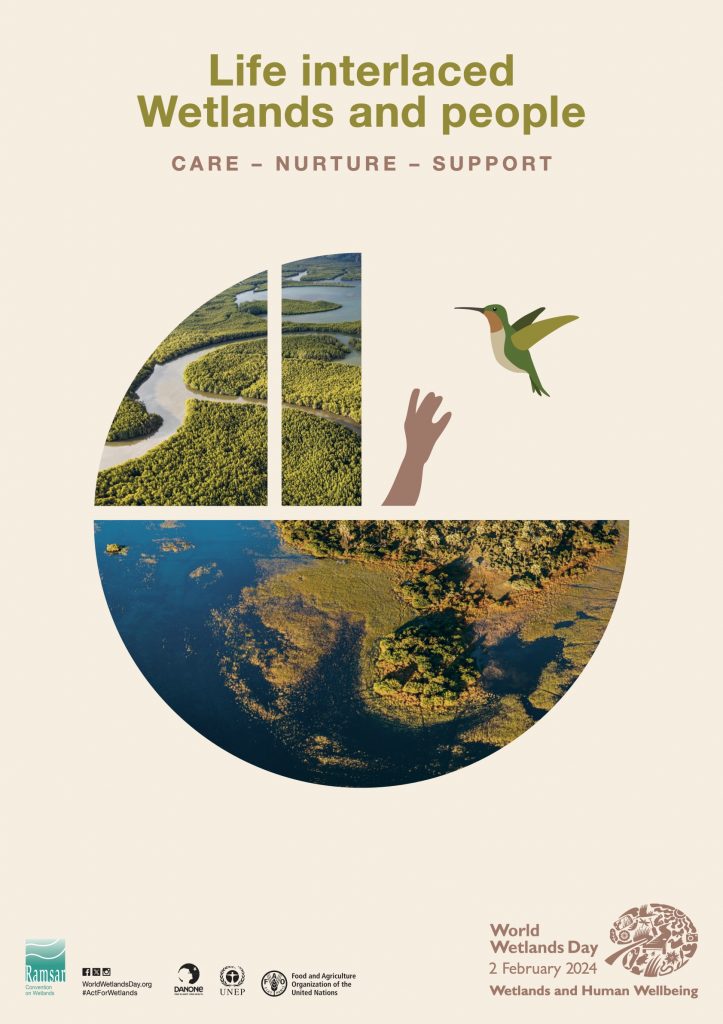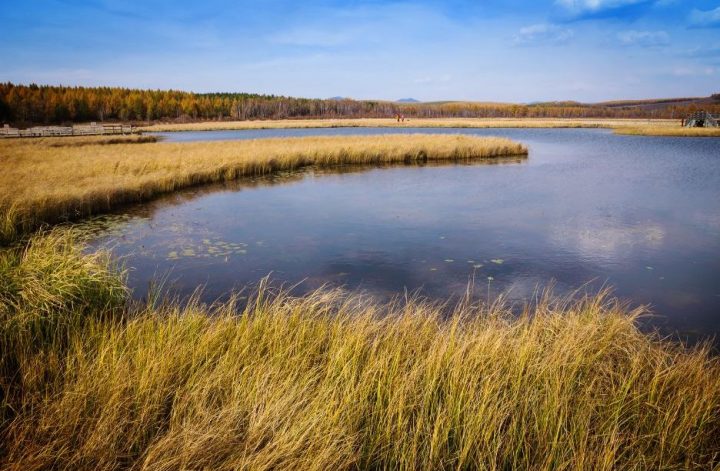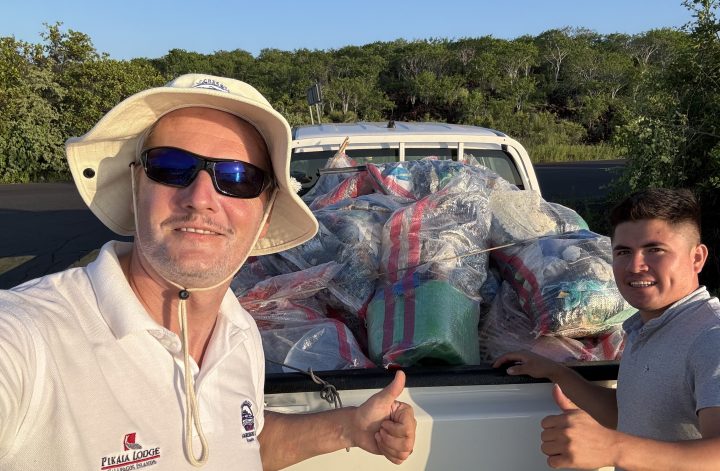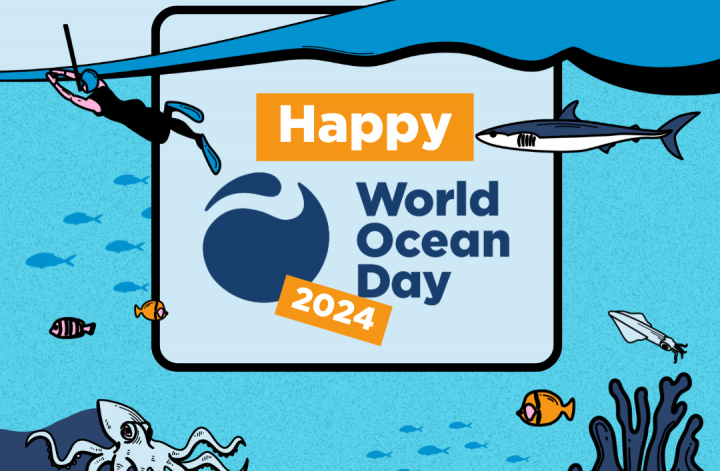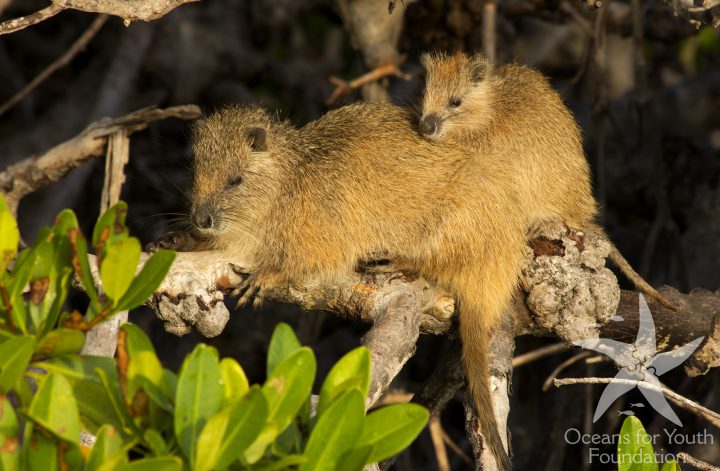By Samantha Whitcraft, Director, Conservation & Outreach. Aggressor Adventures
I’ve been fortunate to explore a variety of wetlands around the word – seasonal savannas around the Orinoco River in Venezuela, mangroves islands in Cuba and Indonesia, Florida’s massive Everglades, the spectacular flooded forests of the Amazon, and rare anchialine ponds in Hawaii’s lava fields, to name a few. Because of these experiences, every World Wetlands Day, I’m reminded how beautiful, diverse, and ecologically important these amazing ecosystems are. And I’m reminded how grateful I am that they exist and function as they do.
What’s World Wetlands Day?
World Wetlands Day awareness campaigns have happened yearly since 1997. Since 2021, February 2 has been internationally and officially recognized as World Wetlands Day, commemorating the anniversary of the Convention on Wetlands, which was adopted as an international treaty in 1971 to help protect important wetlands around the world.
What’s a Wetland?

As the name suggests, wetland ecosystems are continually or periodically inundated with water – fresh, brackish, or salt water. There are wetlands all over the world influenced by all kinds of water including ocean tidal zones, riverine floodplains, springs, seasonal ponds, and estuaries. Wetlands are further differentiated by the plants that dominate them. For example, many tropical wetlands are dominated by mangrove trees while many temperate wetlands are dominated by grasses resulting in marshes.
There are so many kinds of wetlands and their associated plants that they have many different names around the world including bayous, flooded savannas, fens, bogs, swamps, vernal pools, and billabongs to name a few. In short, wetlands exist “…at the interface between truly terrestrial ecosystems and aquatic systems, making them inherently different from each other, yet highly dependent on both.” (Mitsch & Gosselink, 2007)
Why are wetlands important?
Here’s a short list of the five main reasons I’m grateful for wetlands and you might be too…
- Wetlands can help protect coastlines from storm impacts. For example, intact mangrove forests can help with shoreline stabilization via their intricate and extensive root systems. When storm surges come in association with hurricanes and intense tropical storms, these intact ecosystems can help reduce the speed and height of floodwaters. As I live near the Gulf of Mexico, every hurricane season my coastal community and I are deeply grateful for the protected mangroves along our vulnerable coast.
- Intact wetlands can aid in nutrient retention and thus water purification. Because wetlands are often a buffer between land and sea, they can trap the sediments and pollutants in run-off which in turn keeps the water entering coastal waters clean and clear. Healthy coastal mangroves can therefore be very important in helping to keep coral reefs free of suffocating sediments or excessive nutrients both of which can be harmful to corals. Often where I’ve seen healthy coral reefs, which I love, they’ve been associated with nearby mangroves, and studies suggest this strong correlation too. Thus, I’ve learned to enjoy and appreciate exploring mangroves along with coral reefs.

- Intact and well-protected wetlands are often highly biodiverse and provide critical habitat for many amazing species. For example, the Amazon River and its associated wetlands are home to over 3000 species of unique and colorful fishes, many found nowhere else in the world (Amazon Fish. wwf.panda.org). While mangroves provide critical early life stage habitat for many species of reef fishes, serving as a place for young fish to hide from predators and grow-up. For those of us who appreciate seeing vibrant fish life on healthy reefs, we can thank mangroves for that in many cases.
- Wetlands are beautiful and exciting to visit. With awe and gratitude, there are still more amazing wetlands on my exploration bucket-list. I dream of canoeing South America’s Pantanal where jaguars hunt crocodiles along the riverbanks. I hope to explore the Sundarbans (which means “beautiful forest”) in the Bay of Bengal where monkeys swim underwater and tigers hunt among massive mangroves, and someday I hope to hike the Danube delta, home to one of the largest wetland restoration projects ever under-taken. With Aggressor Adventuresâ, there are still more wetland areas to explore including the mangroves of the Gardens of the Queen National Park in Cuba from aboard the Jardines Aggressor II, grasslands where elephants gather at watering holes in Sri Lanka with the Aggressor Signature Lodges, and the floodplains of the Nile River from aboard the Aggressor Nile Queen II.
What wetlands are you grateful for and which one will you explore next?
References & More Information:
https://en.wikipedia.org/wiki/Wetland
https://www.worldwetlandsday.org/about
Amazon fish”. wwf.panda.org.
Mitsch, William J.; Gosselink, James G. (2007-08-24). Wetlands (4th ed.). New York, NY: John Wiley & Sons. ISBN 978-0-471-69967-5
